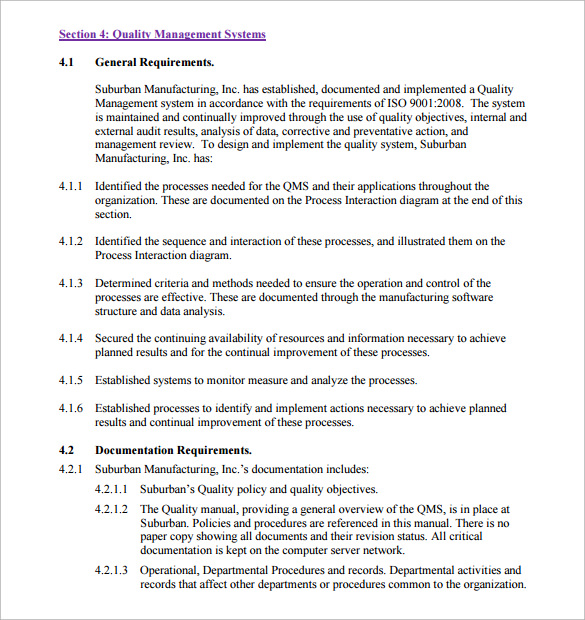Quality Objectives Examples Manufacturing
Whether you own a small manufacturing company or you have a company that relies on manufacturers to make your products, it’s important to understand manufacturing objectives and goals. The truth is that manufacturing jobs have become more scarce, even though manufacturing output has steadily grown, according to a recent analysis from the Pew Research Center. Despite these statistics, manufacturing objectives and goals haven’t changed that much over the years.
Quality Objectives For Manufacturing Company
Quality objectives are requirements of the ISO 9001 standard, but why? What are they, and what are they for? While the answers to these questions may be interesting, a more important question is how do you write good quality objectives so that they are beneficial to your company? MANAGING QUALITY OBJECTIVES IN THE QMS JOURNEY As per ISO 9001 - 2015 PMI, PMP, PMBOK and the PMI Registered Education Provider logo are registered marks of the Project Management Institute, Inc.
Quality Objectives Examples Manufacturing Jobs

Manufacturers produce tons of goods every day, all of which impact consumers directly or indirectly. Similar to any industry, manufacturing objectives and goals are designed to improve a company’s bottom line. The objectives of manufacturing industry are related to quality, safety, vendor selection, and efficiency and costs. Elements of QualityOne of the most important objectives of manufacturing industry is to produce a high-quality product. If you own a business that relies on a manufacturer to produce your goods, you will lose faith in that manufacturer if the product is not made to the highest standard.
CPU: Intel Core Duo 2.4 GHz. Disk Space: 16GB HDD. Internet. Graphics Card: Graphic Card 1GB GeForce 8400 GTS or better. Gta para pc download. RAM: 4GB RAM.
Let’s say you’re able to sort poor products from good ones. Those poor products will still mean a loss to your company because you can’t put them on the market. As a result, one of the main objectives of manufacturing industry is reducing flaws and maintaining high product standards. Along these lines, some of the measures that can help manufacturers maintain high quality include weekly product sample reviews, physical and visual inspections, as well as physical tests. Elements of SafetyThe main objective of the manufacturing process is to produce as many goods as possible in the least expensive way possible. Manufacturers can only achieve that objective by relying upon heavy equipment, much of which is automated.
Although this equipment is an asset when it comes to boosting production, it also poses risks to workers. For example, heating elements or disconnected joints can burn employees at a factory. Injuries can also result from things such as spilled liquids that cause slip and fall accidents. It’s the responsibility of manufacturers to implement strategies that enforce safety regulations that can reduce at-work injuries. In some instances, manufacturers can offer incentives such as bonuses for every month that a plant or factory has zero injury events.
Safety also extends to the actual product a manufacturer makes. For example, if you own a skateboard company, you expect your manufacturer will make wheels on that skateboard don’t fall off after several rides as this can lead to injuries and a major lawsuit. Elements of Vendor SelectionAnother objective of manufacturing process is for manufacturers to ensure that they are able to obtain raw materials from a vendor that's reliable and affordable. It’s fairly rare for a manufacturer to have all of the raw materials necessary to produce an item. For example, a cereal manufacturer might not grow its own corn and that supplier would need to find a supplier. Finding a vendor that's reliable and affordable can be a challenge.
Some vendors are expensive, which cuts into the profit margin of a manufacturer, and this also means those costs are passed on to you as a business owner who sells the final product. When evaluating prospective vendors, important items that manufacturers often consider, include the types of raw materials they make; their customers and how long they’ve had those customers; the age of their facilities and the machinery they use; and the quality of the systems and standards that they have implemented. Elements of Efficiency and CostsBoosting efficiency while controlling costs is another objective of the manufacturing process. In manufacturing, efficiency is interconnected with costs. In general, the greater the efficiency, the lower the costs. For example, if a manufacturer misses a production deadline, the company might face a contract penalty or it might lose a bonus. In the same way, if workers are taking too long to finish a project, the company may have to pay workers overtime or hire additional temporary staff to get back on schedule.